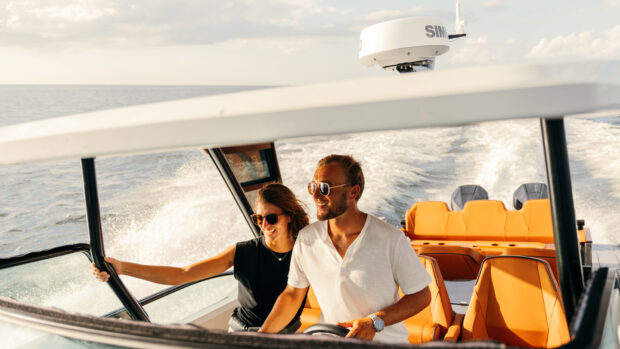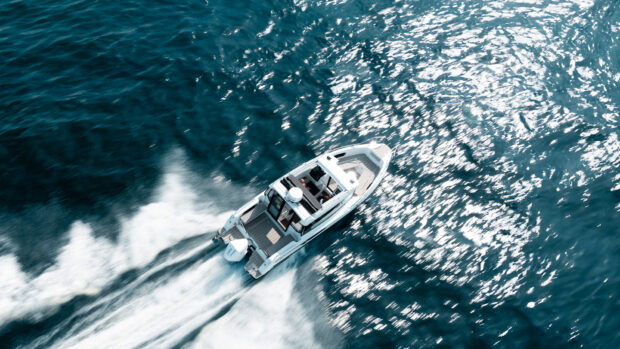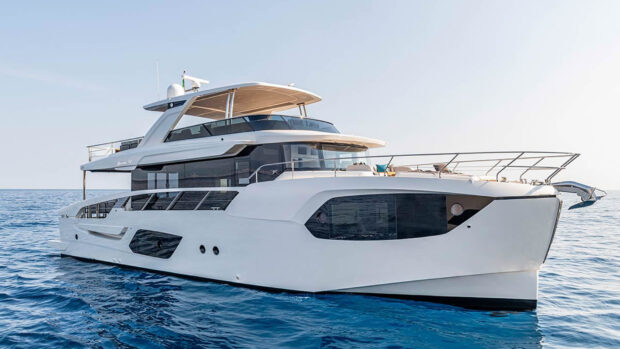Visit a boatyard in the Spring and you’ll be greeted by the unpleasant smell of solvents.
Known as VOCs (Volatile Organic Compounds), solvents are essential to the application and curing of traditional antifoul paints, many of which contain up to 45% VOCs.
These solvents pose a fundamental problem – they’re major contributors to climate change. In an attempt to keep the polar ice caps intact, regulations are moving towards stringent reduction of VOC content, to the point of complete elimination.
The atmosphere is not the only area at risk. Traditional antifouls work by releasing a toxic blend of biocides (antifoul’s active substances), designed to tackle the entire spectrum of slime, weed and shell fouling, which love to cling to hulls.


The environmental impact of washing boats that still use conventional eroding anti-foul paints.
Again, regulators are moving in to limit the damage. Within Europe and the UK, the choice of active biocides available to paint manufacturers has been recently reduced from more than 50 to less than 15, and the latest legislation may restrict each antifoul product to a single biocide.
The speed at which biocide is released – the leach rate – is also under scrutiny, looking likely to follow California and Sweden in limiting it to just 9 micrograms per square centimetre per day.
But while these restrictions spell bad news for traditional antifouls, the good news for boat owners is that a proven and legally compliant solution already exists. Coppercoat already meets these regulations and has done so since its launch in 1991.
Coppercoat combines a single biocide (an exclusively sourced copper powder made in the UK from recycled copper wire) with a modern water-based and VOC-free epoxy, so gives off no dangerous solvents or unpleasant smells.
And with a minimal leach rate of just 1.4 micrograms per square centimetre per day, Coppercoat is the logical, environmentally responsible and effective choice for antifouling.
The low leach rate also contributes to its longevity, with a single application of Coppercoat typically remaining effective for 10 years or more. And when a re-application is eventually due, it is made directly to the old coating, thereby eliminating the ‘end-of-life’ contamination associated with scraping off old paint.
Coppercoat has always been a great choice for those looking to minimise the time and costs associated with antifouling. Now, it’s also the environmentally responsible choice to protect our boating environment.
For more information, visit the official Coppercoat website.









